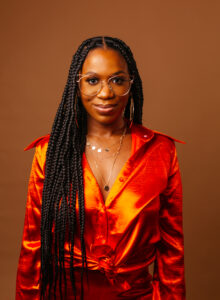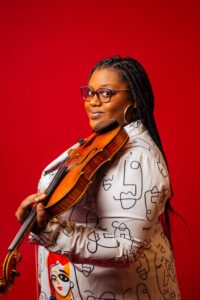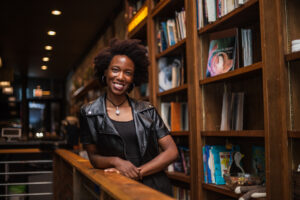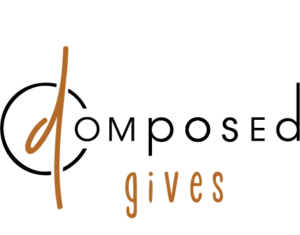D-Composed brings their Music in Color experience to life at South Side Community Art Center!
Founded in 2017 by Kori Coleman, D-Composed is a chamber music experience that celebrates & honors Black creativity and culture through the music of Black composers. To date, D-Composed has gained national recognition with appearances on The Colbert Show alongside Jamila Woods and has collaborated with notable institutions and highly recognized brands such as Apple, The Museum of Contemporary Art Chicago, & The Rebuild Foundation.
This year D-Composed is featuring commissioned sketches from their Music in Color Vol. 4 coloring book featuring artists Dwight White II, Amoz Wright, Kayla Mahaffey, and Aaliyah Lachele of Peanut Buddarart!
RSVP HERE!

Kori Coleman has crafted the organization’s artistic & programmatic vision with the development of conceptual programming that fosters collaboration with Black artists across mediums and disciplines.
In addition to being the Executive Director and founder of D-Composed, Kori is a brand strategist working in marketing & advertising. She is a graduate of Spelman College in Atlanta, Georgia with a B.A. in Philosophy.

Violinist Caitlin Edwards began her musical journey at the age of 8 within a non-profit organization in her hometown of Birmingham, Alabama. She gained acceptance into the Alabama School of Fine Arts and music festivals such as the Kennedy Center Summer Music Institute and the National Repertory Orchestra. She later attended the University of Louisville (BM) and DePaul University (MM). Caitlin is a 2022 Esteemed Artist Award recipient from the Chicago Department of Cultural Affairs and Special Events, a 2021 3Arts/Walder Foundation awardee, 2018 Gateways Music Festival Rising Star, a co-curator with the Fulcrum Point New Music Project, and a former fellow with the Chicago Sinfonietta. In addition, she has received Grammy certificates for recordings on Disney’s “The Lion King” and for albums by John Legend and PJ Morton. She released her debut album, “Exhale,” in 2021.
Caitlin is a classically trained violinist, but she’s inspired by gospel, jazz, hip-hop, and neo-soul. She composes original music and intentionally performs the works of Black composers to make sure that these compositions are remembered and spotlighted for aspiring young BIPOC musicians and the world as a whole. Caitlin is a proud member of D-Composed and Ensemble Dal Niente.

Tahirah Whittington is a Grammy-nominated cellist, and a founding member of D-Composed and the Ritz Chamber Players. She is currently the cellist for the Broadway show Dear Evan Hansen National Tour. Previously, Ms. Whittington was the cellist for Hamilton: An American Musical in Chicago. Studio recordings include The Lion King (2019), Beyoncé’s The Lion King: The Gift, and albums by John Legend and PJ Morton.
Television and film appearances include the movie, “Beautiful Day in the Neighborhood” and episodes of “Empire”. Tahirah remotely recorded the cello solo for Rhiannon Giddens’ “Cry No More” arranged by composer Michael Abels. She received her Bachelor’s Degree from New England Conservatory and her Master’s Degree in Cello Performance from The Juilliard School. Tahirah has studied with Laurence Lesser, Joel Krosnick, and Hans Jørgen Jensen.




